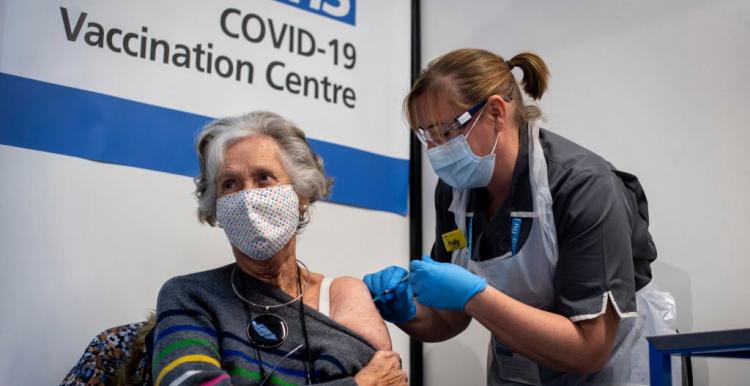What to Do if Your Child Gets COVID-19: A Guide for Parents in the UK
The ongoing COVID-19 pandemic has been a challenging time for families across the UK. As a parent, it’s natural to worry about your child’s health and well-being. If your child tests positive for COVID-19, it’s essential to know what steps to take to ensure their recovery and prevent the spread of the virus. Here is a guide to help you navigate this situation based on UK government guidelines.
1. Stay Calm and Reassure Your Child
First and foremost, try to remain calm. It’s crucial to provide emotional support to your child during this time. Explain the situation in age-appropriate terms and reassure them that they will recover with proper care. Encourage open communication and allow your child to express their feelings and concerns.
2. Consult Your Healthcare Provider
Contact your child’s GP or call NHS 111 as soon as possible to inform them of the positive test result. They will provide guidance on how to care for your child at home and may recommend over-the-counter medications to alleviate symptoms. Follow their advice closely and keep them updated on your child’s condition.
3. Isolate Your Child
To prevent the spread of the virus within your household, it’s essential to isolate your child from other family members. Designate a separate room and bathroom (if possible) for your child’s use. Ensure that they have all necessary supplies, such as tissues, hand sanitiser, and a thermometer, within reach.
4. Monitor Symptoms
Keep a close eye on your child’s symptoms and track their temperature regularly. Common COVID-19 symptoms in children include fever, cough, sore throat, fatigue, and body aches. In some cases, gastrointestinal symptoms like nausea, vomiting, and diarrhoea may also occur. If your child experiences difficulty breathing, persistent chest pain, confusion, or bluish lips or face, seek immediate medical attention.
5. Practice Good Hygiene
Encourage your child to practice good hygiene by washing their hands frequently with soap and water for at least 20 seconds. Provide them with disposable tissues for coughing and sneezing, and remind them to dispose of used tissues immediately. Regularly clean and disinfect high-touch surfaces in your child’s room and bathroom.
6. Maintain a Healthy Environment
Ensure that your child gets plenty of rest and stays hydrated. Offer a balanced diet with fruits, vegetables, and lean proteins to support their immune system. Keep the room well-ventilated by opening windows or using an air purifier.
7. Care for Yourself and Other Family Members
As a caregiver, it’s vital to protect yourself and other family members from infection. Wear a mask and gloves when entering your child’s room and wash your hands thoroughly afterward. Monitor the health of other family members and arrange testing if anyone develops symptoms.
8. Follow Self-Isolation Guidelines
Adhere to the UK government’s self-isolation guidelines and keep your child isolated until they meet the criteria for ending isolation. This typically involves being fever-free for at least 24 hours without fever-reducing medication, improvement in other symptoms, and a minimum of 10 days since symptom onset.
9. Seek Support
Caring for a sick child can be emotionally and physically draining. Reach out to friends, family, or support groups for assistance and emotional support. Remember that self-care is crucial during this time.
By following these steps, you can help your child recover from COVID-19 while minimising the risk of spreading the virus. Stay informed about the latest COVID-19 guidelines and recommendations from trusted sources, such as the UK Government, NHS, and Public Health England, to keep your family safe and healthy.
The latest strain of Covid-19 (August 2023)
According to the UK Health Security Agency (UKHSA), the following boroughs in London are reporting the highest numbers of COVID cases as of September 28, 2023:
| Borough | Cases per 100,000 population |
|---|---|
| Enfield | 52.64 |
| Harrow | 52.03 |
| Brent | 51.38 |
| Ealing | 51.27 |
| Hounslow | 50.91 |
The following boroughs are reporting the lowest numbers of COVID cases:
| Borough | Cases per 100,000 population |
|---|---|
| Richmond upon Thames | 37.82 |
| Bexley | 38.13 |
| Sutton | 39.14 |
| Kingston upon Thames | 39.21 |
| Bromley | 39.38 |
The latest strain of COVID-19 is BA.2.86, which was first identified in the UK on August 18, 2023. It is a subvariant of the Omicron variant, and is characterized by a high number of mutations. It is genomically distant from both its likely ancestor, BA.2, and from currently circulating XBB-derived variants.
BA.2.86 is still under investigation, and it is too early to say how transmissible or severe it is. However, the UK Health Security Agency (UKHSA) has designated it as a “variant under investigation” (VUI), which means that they are closely monitoring it for any signs of increased transmissibility, severity, or immune escape.
Other strains of COVID-19 that are currently circulating include:
- EG.5 (Eris)
- XBB.1.5
- XBB.1.16
- BA.2.75
- BA.4
It is important to note that the SARS-CoV-2 virus is constantly mutating, and new strains of COVID-19 can emerge at any time. This is why it is important to stay up-to-date on the latest COVID-19 news and information, and to continue taking precautions to protect yourself and others from the virus.
How to protect yourself from COVID-19
There are a number of things you can do to protect yourself from COVID-19, including:
- Getting vaccinated and boosted against COVID-19
- Wearing a mask in indoor public settings
- Washing your hands frequently with soap and water
- Avoiding close contact with people who are sick
- Staying home when you are sick
- Getting tested for COVID-19 if you have symptoms

Post Comment